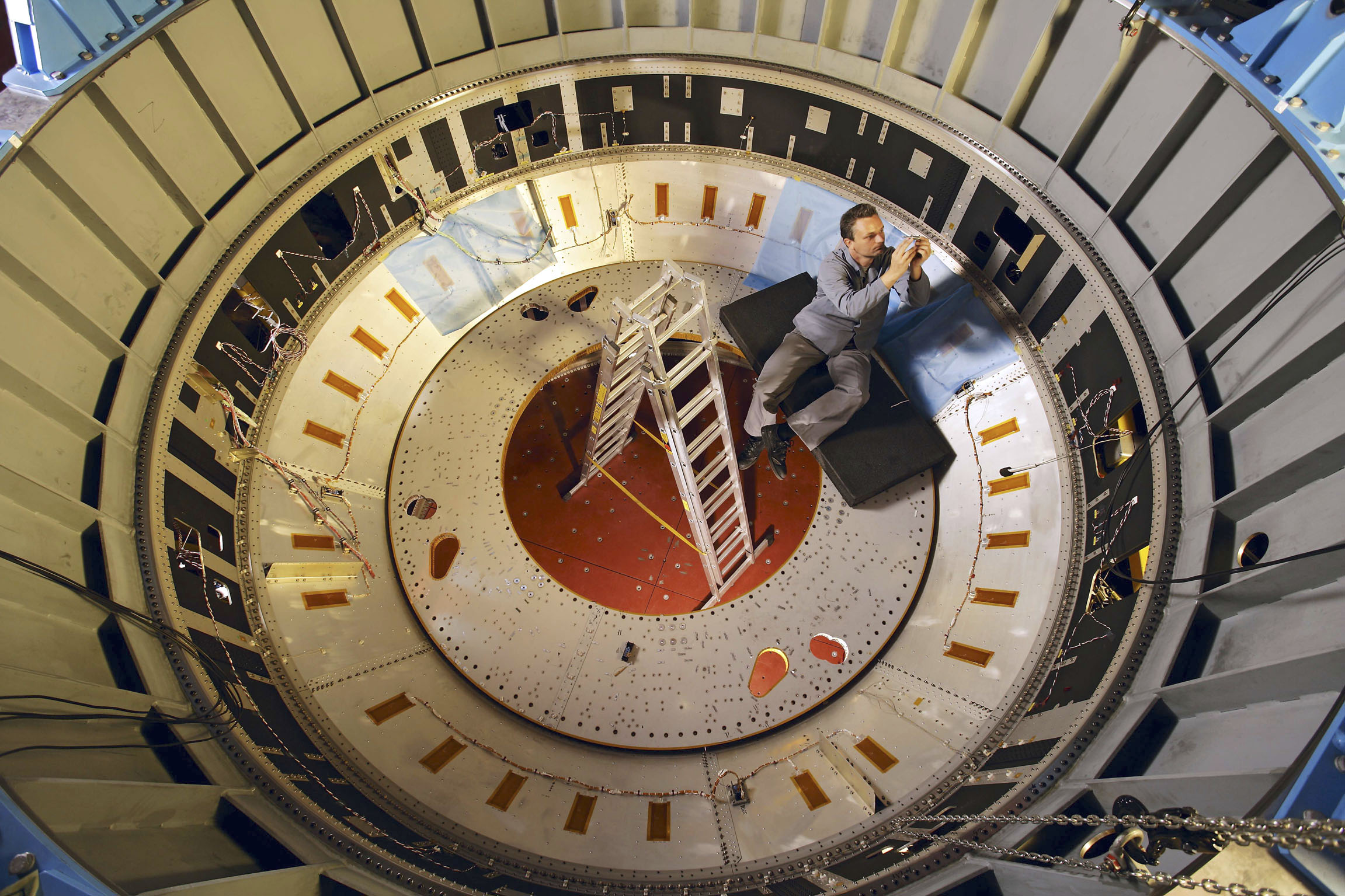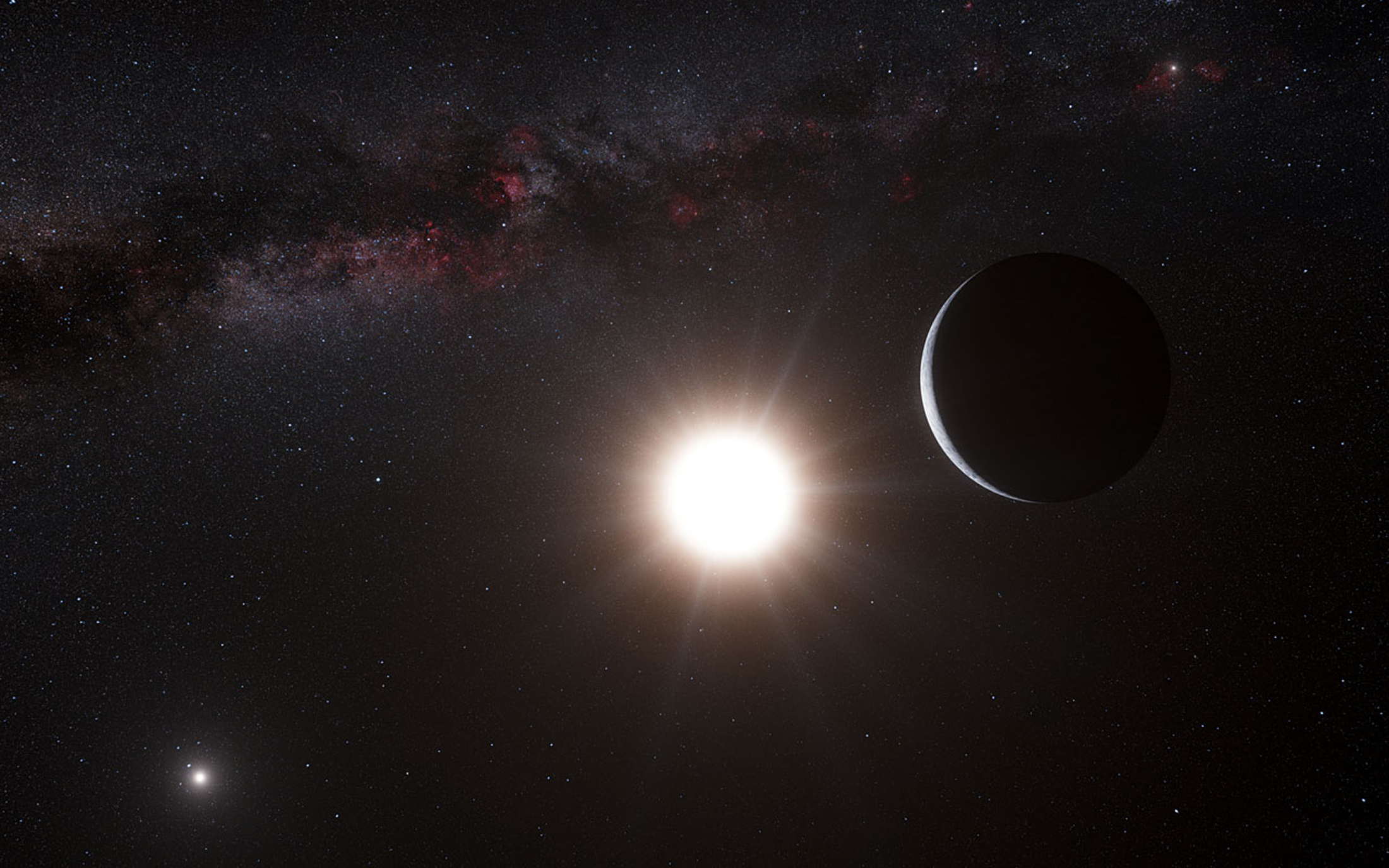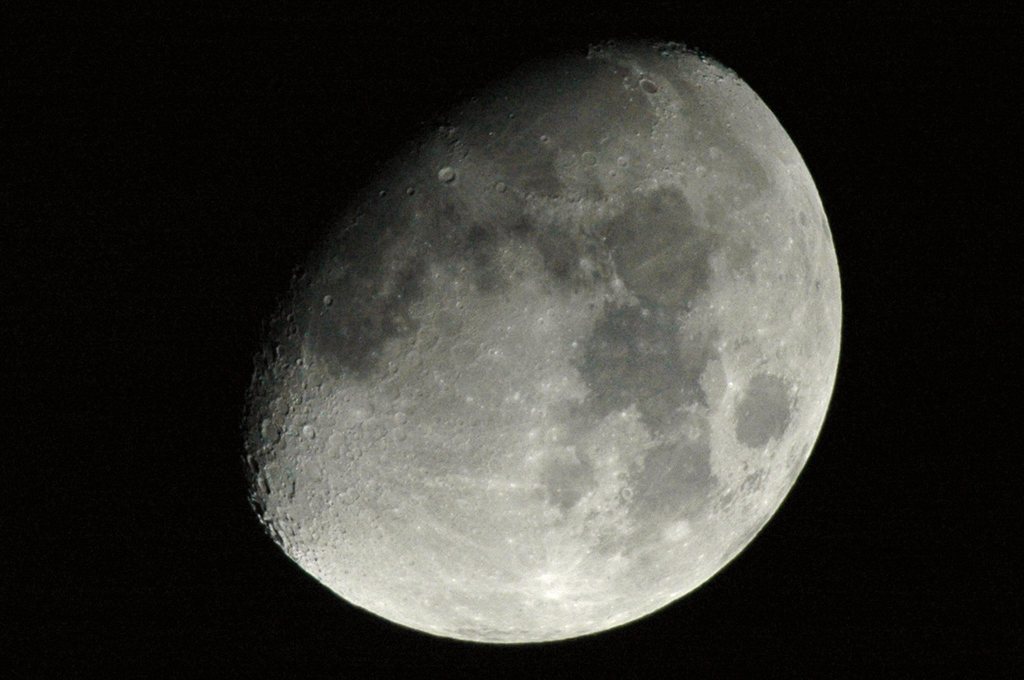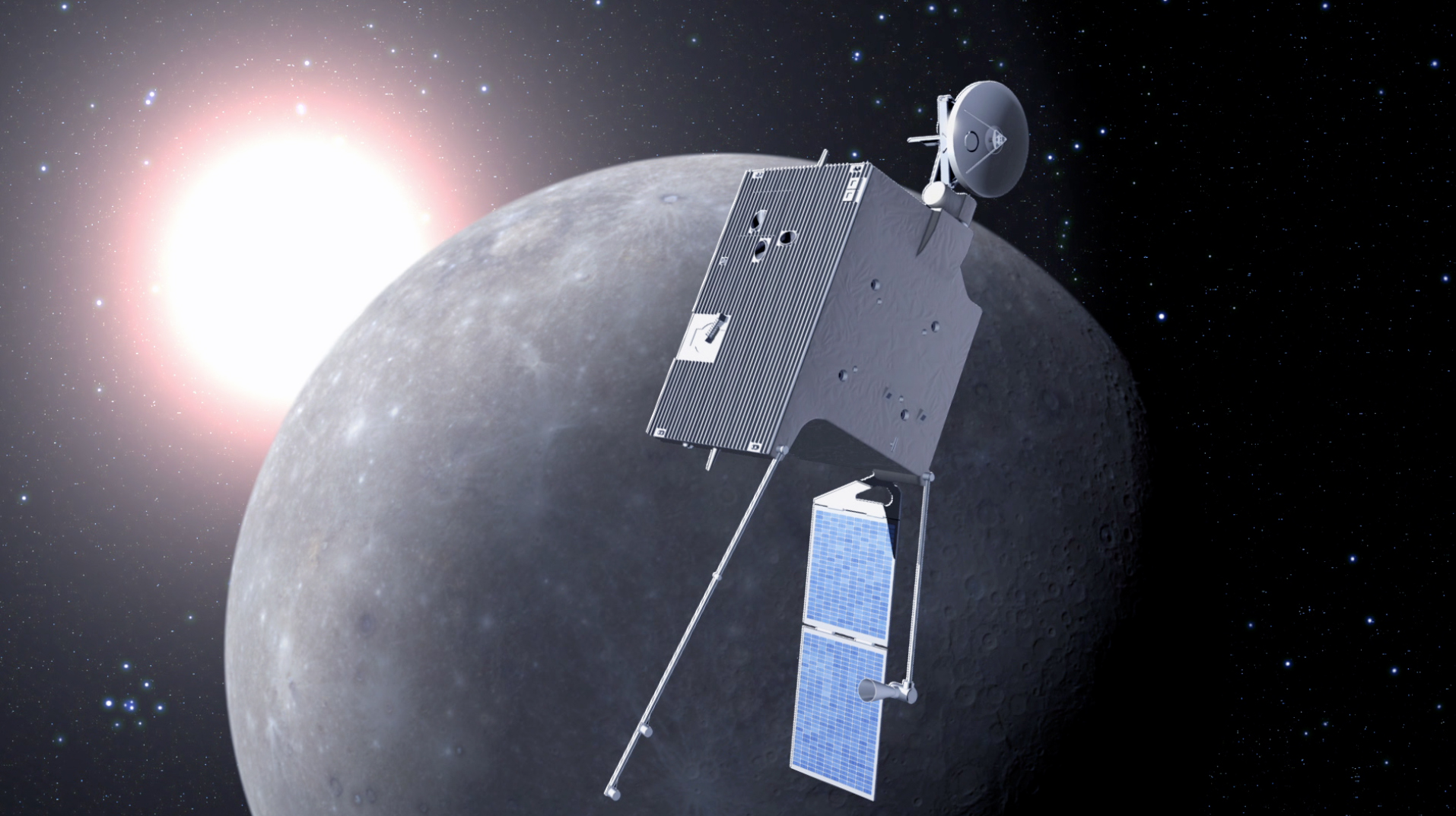Switzerland and Europe – to infinity and beyond

Switzerland is a space superpower. Well, more than you might first think from the size of the country. Along with Luxembourg, it is now taking up the presidency of the European Space Agency, Esa.
When mankind first stepped onto the moon in 1969, Switzerland was there too. The astronauts Neil Armstrong and Buzz Aldrin were of course Americans, but the first scientific experiment they carried out on the moon was a Swiss one.
The two space scientists unfurled a solar screen to capture particles emitted by the sun. That screen was devised and developed at Bern University.
The same university 43 years later won ESA’s approval for CHEOPS, a space telescope that will track possible exoplanets that have been sighted from the ground.
Switzerland’s Michel Mayor and Didier Quéloz, along with their team, first spotted planets that orbited stars outside our solar system in 1995. “I think that the discovery of exoplanets rivals that of DNA, worthy of a Nobel Prize,” claims Philippe Gillet with enthusiasm.
Gillet is the vice-president of Swiss Federal Institute of Technology in Lausanne (EPFL), the institution collaborating on CHEOPS via its space centre.
Light and sturdy
What makes the Swiss such keen spatial adventurers? The answer lies partly in the physics of the Swiss psyche. What gets sent into space must be both light – to make launching lighter, easier and cheaper – and very sturdy, as repairs are impossible millions of kilometres away from home.
Gillet reckons that “we benefit from a profound knowledge of miniaturisation, and a long tradition of reliability. Other competitors on the European stage are France and Germany – you have to try and bring something to the table that others don’t.”
For example, being able to construct a microprobe, a nuclear microscope that is no bigger than a matchbox and capable of resisting the vibrations and temperature changes of an interplanetary flight.
And that’s just what a Swiss start-up together with two Swiss universities did – for the American Pheonix mission. In July 2008, their device which made it to Mars was the first one to find frozen water nano-crystals.
Switzerland is also the testing site for the BELA interplanetary laser altimeter. BELA is due to leave for the planet Mercury in 2013, on board the BepiColombo orbiter. After six and a half years of travel, BELA should orbit the closest planet to the Sun, and map Mercury’s surface and elevations from 700 kilometres above to within a metre of accuracy.
Success story
Precision, reliability and innovation – traits often associated with the “Swiss Made” label are also behind the longest running Swiss space saga – launcher payload fairings.
More simply, the giant hood that protects the space vessel during the first few minutes of Esa flights is made in Switzerland. They were originally manufactured by the Oerlikon group, which has since been taken over by Ruag’s space division.
On over 200 missions, the fairings, designed to be ejected once the vessel gets into space, have never failed. If the payload fairings do not open, the whole mission has failed. And all the money invested in the mission, hundreds of millions or even billions would be lost.
Does this mean Switzerland has sewn up this corner of the market? “Nothing’s certain in this industry,” warns Gillet. “The financial crisis has shown us that it is very difficult to retain a market.”
“But I think Switzerland has the means to keep the markets it’s already serving, as well as enormous potential, both with existing SMEs and others that can develop and feed off the space industry,” Gillet explained.
€10 billion, even when times are tough
Switzerland has just taken on the presidency of Esa, along with Luxembourg, and will remain at the agency’s head until 2015. Mauro Dell’Ambrogio, State Secretary for Education and Research, together with Luxembourg minister for communications and research, François Biltgen, led debates at a meeting in Naples in November.
Despite the turns taken by the financial crisis since the last meeting in 2008, ministers managed to keep the agency’s budget at €10 billion (SFr12 billion) for the next three years.
Esa has no plans to aim for the moon at the moment, but two missions to Mars, in collaboration with Russia, are going ahead, as is the partnership with the International Space Station (ISS).
Star Wars
Naples was the scene of another crucial decision: whether to launch the development of a new Ariane 6, as supported by Esa and France, or whether to opt for an improved version of Ariane 5, the ME – for middle evolution, – an option preferred by Germany.
After two nights of negotiations, where Switzerland and Luxembourg played a mediating role, the ministers settled on Ariane 5, but with components that will be utilisable for Ariane 6, now slated for the 2020s.
But the ESA will have to compete more and more fiercely for private commercial rocket launches. Arianespace, which had cornered 60 per cent of the market in 2010, has now got to reckon with the Russo-American launcher Proton, the Russo-Ukrainian Zenit, the Chinese Long March and the Indian PLSV – to say nothing of the Falcon rockets launched by SpaceX, a Californian start-up partly funded by Nasa, which is slashing the price per ton to be placed in orbit. Cost is not one of Ariane’s strong points.
Exciting times are ahead for Esa. The next ministerial meeting is slated for 2015, in Switzerland. Until then, Switzerland and Luxembourg will supervise how quickly the decisions taken in Naples are implemented.
Switzerland and Luxembourg have to provide political and diplomatic leadership in case of “significant malfunctions”, Dell’Ambrogio said. “We are in some ways the last resort for negotiations if the Esa’s management asks us to step in.”
Switzerland was a founding member of Esa, and has participated in most of its missions since 1975.
Switzerland contributes about SFr150 million to the agency per annum, most of that comes back to the country in the shape of industrial contracts. When work for the US and Russian agencies is factored in, the space sector accounts for SFr200 million in turnover and employs 800 people directly, many of them highly qualified.
Swiss spatial research is at the cutting edge of technology in several domains, such as the atomic clocks which will equip Galileo, the future European satellite navigation system. Switzerland is also a leader when it comes to exoplanets. HARPS, the world’s most precise spectrograph was built in Switzerland, as will be CHEOPS, the spatial telescope that is designed to sniff out exoplanets. The Swiss Space Center at Lausanne’s EPFL university has been recognised as an Esa centre of competence for nanotechnologies.
The Swiss space industry is one of the world leaders when it comes to payload fairings, used to protect satellites during rocket launches. It is also a major manufacturer of the chassis of automatic transport vehicles which supply the International Space Station, as well as rocket vibration dampeners and motors for the American Rovers, which have driven over the surface of Mars, as well as plenty of other places.
By pooling the budgets of its 20 member states, the European space agency can envisage projects that no country on the continent could possibly undertake on its own. Its annual budget is SFr4.8 billion ($5.2 billion). This comes in at much more than the SFr3.5 billion of Russian equivalent agency, Roskosmos, but far less than the SFr16.5 billion Nasa in the US has at its disposal.
Esa has been launching telecommunication satellites since 1975 – in fact half of what we put in orbit is used to transmit radio, TV or internet signals, as well as weather data. Soon, geolocalisation will be added to that list. Esa has its own launch base on Kourou, in French Guiana, and this is where the rockets Ariane, Vega and Soyuz are launched.
Europe has sent probes throughout the solar system: to Venus, Titan (a satellite of Saturn), the Moon, Mars to the Halley and Churyumov-Gerasimenko comets, and soon Mercury.
Esa also looks into deep space, notably with the Herschel and Planck telescopes. They analyse the formation of planetary systems and the echoes of the Big Bang.
Since 1978, ESA has also trained astronauts, and one of the three first European space travellers was Swiss citizen Claude Nicollier. These spaceflight participants regularly fly with American or Russian missions, most recently to the International Space Station, where Esa has its own laboratory. As many as 33 Europeans have been to space.
(Translated from French by Victoria Morgan)

In compliance with the JTI standards
More: SWI swissinfo.ch certified by the Journalism Trust Initiative



You can find an overview of ongoing debates with our journalists here. Please join us!
If you want to start a conversation about a topic raised in this article or want to report factual errors, email us at english@swissinfo.ch.